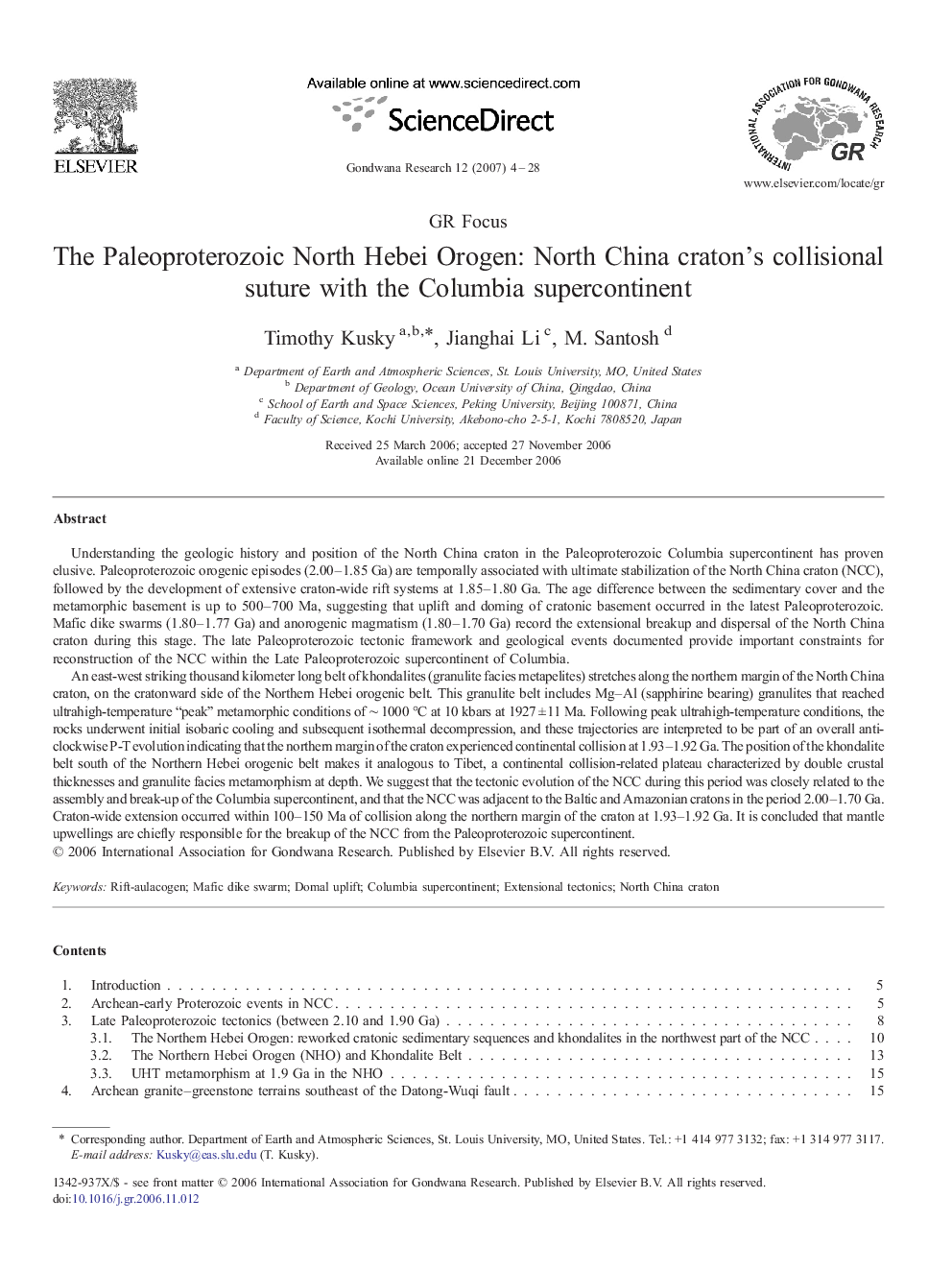| کد مقاله | کد نشریه | سال انتشار | مقاله انگلیسی | نسخه تمام متن |
|---|---|---|---|---|
| 4727978 | 1640153 | 2007 | 25 صفحه PDF | دانلود رایگان |

Understanding the geologic history and position of the North China craton in the Paleoproterozoic Columbia supercontinent has proven elusive. Paleoproterozoic orogenic episodes (2.00–1.85 Ga) are temporally associated with ultimate stabilization of the North China craton (NCC), followed by the development of extensive craton-wide rift systems at 1.85–1.80 Ga. The age difference between the sedimentary cover and the metamorphic basement is up to 500–700 Ma, suggesting that uplift and doming of cratonic basement occurred in the latest Paleoproterozoic. Mafic dike swarms (1.80–1.77 Ga) and anorogenic magmatism (1.80–1.70 Ga) record the extensional breakup and dispersal of the North China craton during this stage. The late Paleoproterozoic tectonic framework and geological events documented provide important constraints for reconstruction of the NCC within the Late Paleoproterozoic supercontinent of Columbia.An east-west striking thousand kilometer long belt of khondalites (granulite facies metapelites) stretches along the northern margin of the North China craton, on the cratonward side of the Northern Hebei orogenic belt. This granulite belt includes Mg–Al (sapphirine bearing) granulites that reached ultrahigh-temperature “peak” metamorphic conditions of ∼ 1000 °C at 10 kbars at 1927 ± 11 Ma. Following peak ultrahigh-temperature conditions, the rocks underwent initial isobaric cooling and subsequent isothermal decompression, and these trajectories are interpreted to be part of an overall anti-clockwise P-T evolution indicating that the northern margin of the craton experienced continental collision at 1.93–1.92 Ga. The position of the khondalite belt south of the Northern Hebei orogenic belt makes it analogous to Tibet, a continental collision-related plateau characterized by double crustal thicknesses and granulite facies metamorphism at depth. We suggest that the tectonic evolution of the NCC during this period was closely related to the assembly and break-up of the Columbia supercontinent, and that the NCC was adjacent to the Baltic and Amazonian cratons in the period 2.00–1.70 Ga. Craton-wide extension occurred within 100–150 Ma of collision along the northern margin of the craton at 1.93–1.92 Ga. It is concluded that mantle upwellings are chiefly responsible for the breakup of the NCC from the Paleoproterozoic supercontinent.
Journal: Gondwana Research - Volume 12, Issues 1–2, August 2007, Pages 4–28